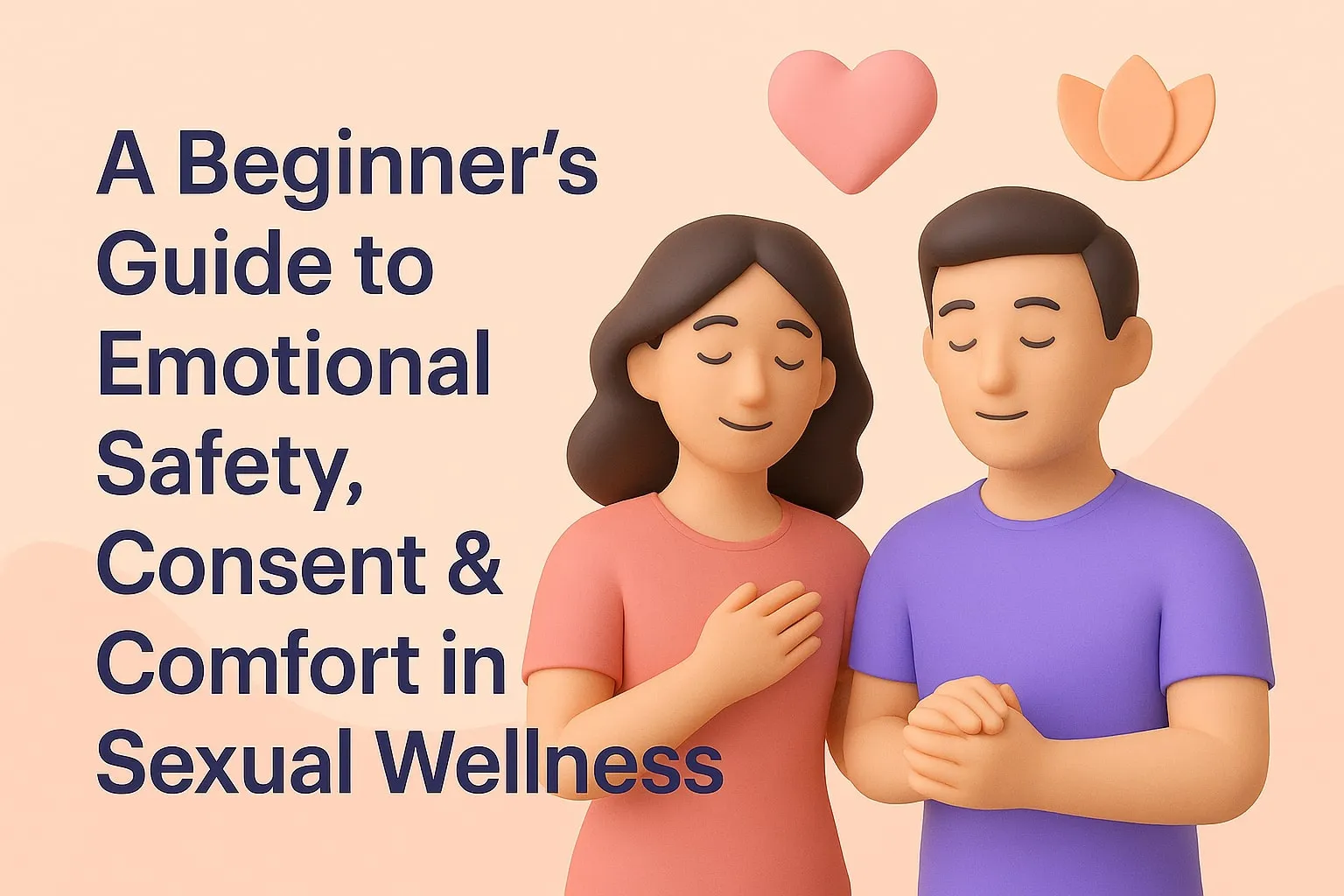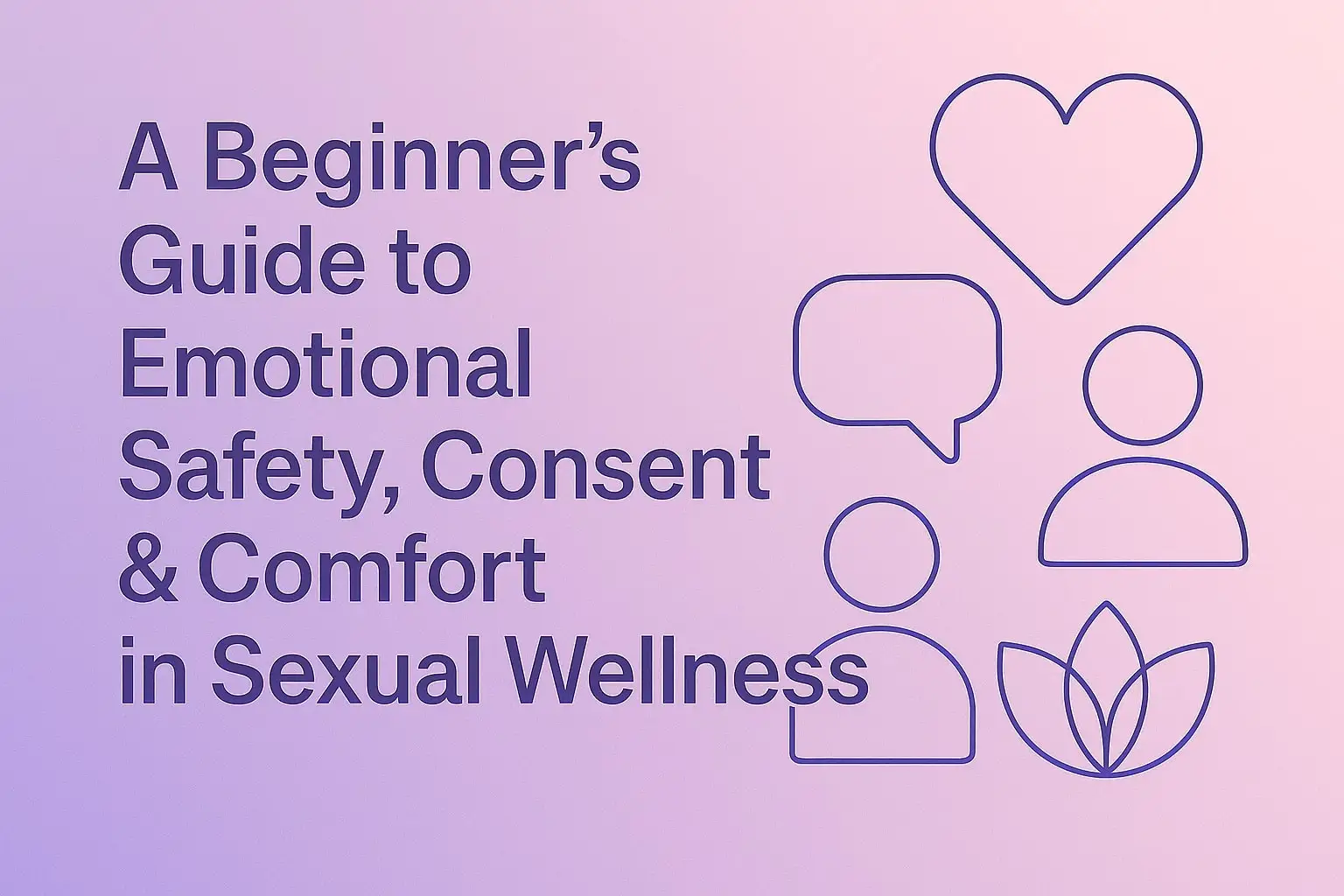
Understanding how comfort, communication, and trust shape healthy intimate experiences.
Sexual wellness is much more than physical intimacy. It begins with emotional safety, mutual respect, and the confidence to express what feels right for you. For beginners — especially in cultures where intimate topics are rarely discussed openly — understanding these ideas can feel new or overwhelming.
This guide provides a gentle, simple introduction to consent, comfort, and emotional safety, helping you build a healthier and more confident relationship with intimacy.

Emotional Safety Comes First
Emotional safety means feeling accepted, understood, and respected. It allows you to express your thoughts and needs without fear of judgment. When emotional safety exists, conversations become easier, boundaries become clearer, and intimacy grows naturally.
A relationship built on emotional safety creates a strong foundation for trust, connection, and comfort — all essential for healthy intimacy.
What Consent Really Means
Consent is not just a single moment or a simple “yes.”
It is an ongoing, mutual agreement where both partners feel equally comfortable and in control.
Healthy consent includes:
- Respecting each other’s boundaries
- Communicating clearly and honestly
- Feeling free to pause or stop at any time
- Moving forward without pressure, guilt, or expectation
Good consent strengthens trust and ensures that intimacy feels safe and enjoyable for both partners.
Comfort: The Foundation of Healthy Intimacy
Comfort involves your emotions, your mind, and your body.
You are ready only when you feel relaxed, secure, and free from pressure.
If something feels unclear or uncomfortable, slowing down is always the right choice.
Your pace matters, and honoring it is an important part of sexual wellness.
Communicating Your Boundaries
Healthy intimacy depends on open communication. You don’t need perfect words — simple, honest expression is enough. Saying things like:
- “I’m okay with this.”
- “I’m not comfortable with that.”
- “Can we slow down a little?”
…helps your partner understand you better. Clear, gentle communication reduces misunderstandings and builds emotional trust.
Self-Awareness Deepens Connection
Intimacy begins with understanding yourself.
Self-awareness helps you recognize:
- What feels comfortable
- What relaxes you
- What boundaries matter most
- What emotional needs you carry
The more you understand yourself, the easier it becomes to communicate your needs and connect meaningfully with your partner.
If you’re exploring personal wellness privately, you can browse gentle, beginner-friendly options here: Explore Wellness Tools
Building Emotional Connection with Your Partner
Meaningful intimacy grows through small, everyday actions. Listening attentively, speaking honestly, offering kindness, and being patient during vulnerable moments all strengthen emotional closeness.
When couples support each other emotionally, physical intimacy feels natural, respectful, and deeply connected.
When Stress Affects Intimacy
Stress, anxiety, and emotional overwhelm can affect intimacy — and this is completely normal. Instead of feeling guilty or frustrated, talk openly about how you feel. Sometimes slowing down, resting, or simply spending quiet time together can help rebuild closeness.
Emotional health is always a key part of sexual wellness.
Move at Your Own Pace
There is no “correct” timeline for intimacy. What matters most is your comfort and readiness. You can move slowly, pause anytime, or revisit your boundaries whenever needed.
Your journey should feel safe, calm, and supported — never rushed or pressured.

Conclusion
Sexual wellness begins with emotional wellness. When emotional safety, consent, communication, comfort, and trust come together, intimacy becomes meaningful, healthy, and positive.
Whether you explore on your own or with a partner, move gently, communicate openly, and prioritize what feels right for you.
You deserve an experience rooted in respect, understanding, and care. Explore at your own pace: Browse Wellness & Intimacy Tools
